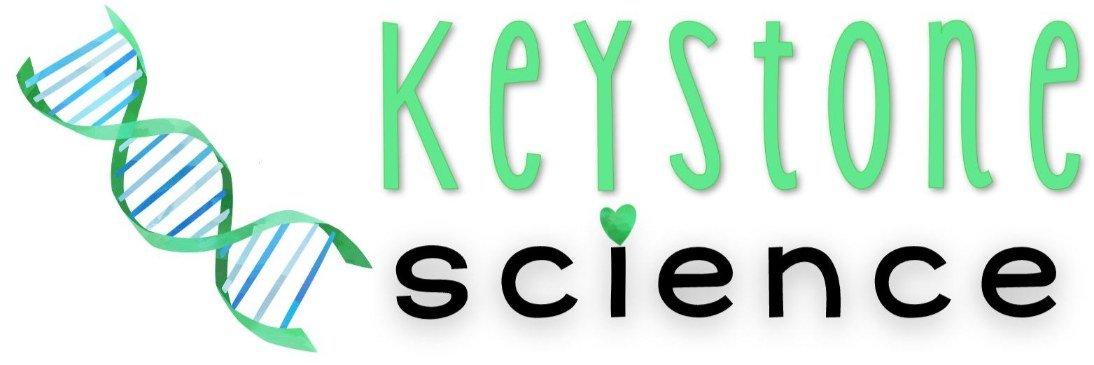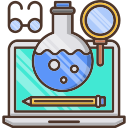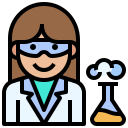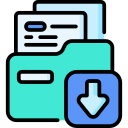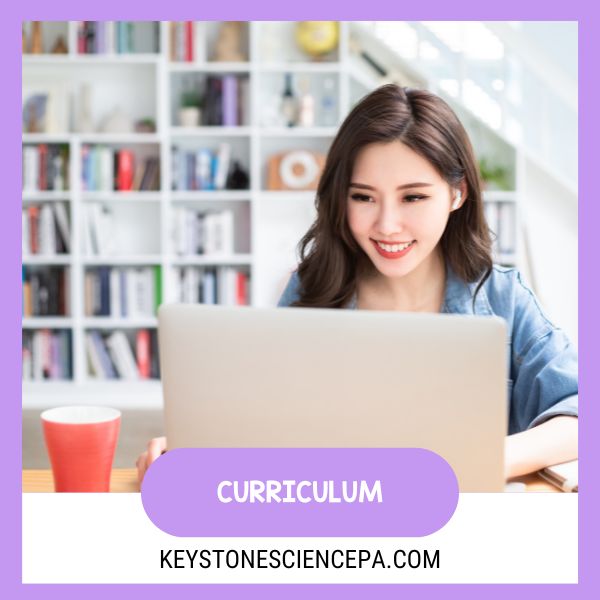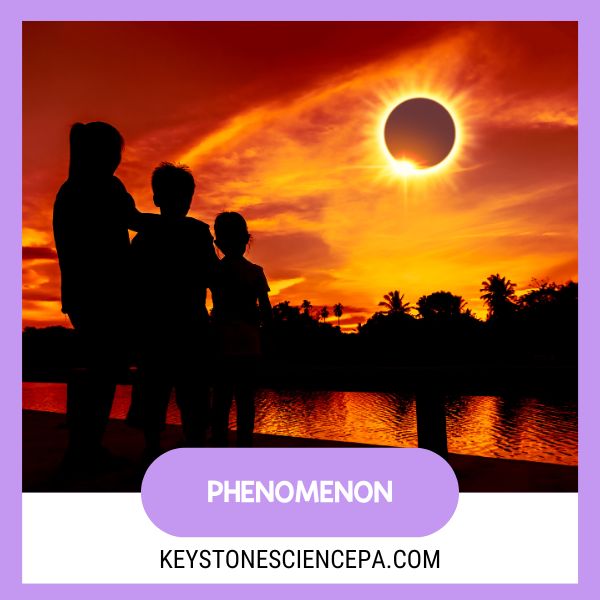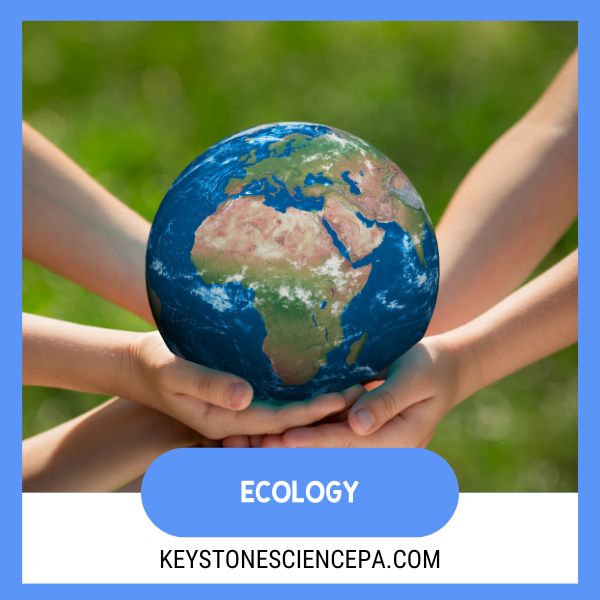Hi Friends! I hope your summer is giving you all the relaxation 💤you deserve and maybe even that trip 🏖️you’ve been counting down the days for.
I’m sure you probably saw the words “Back To School…” and thought, nope!
But, I promise this is NOT going to force you to get back into full-on teacher mode during your summer break.
Instead, this first in a 5-part Back to School series aims to give you clear and actionable steps to help you prepare and update your curriculum for the new school year.
Just think of it as things to keep in mind or save this blog for when you do feel like getting back into teacher mode.
These upcoming blog posts are going to break down how I tackle updating an entire school year of curriculum and not just refresh it, but organize it.
I know the feeling of walking back into your classroom, looking at your planner, and thinking, where do I even start? 😫
That is exactly why you’ll want to stick around, because that feeling right there can be avoided by a little bit of prep, without feeling like you’re losing your summer vacation.
If you’re like me, in the past you’ve probably made a bunch of little notes to yourself to update certain lessons for whatever reason. Maybe the students weren’t engaged or the content was just outdated.
And if you’re really like me, months went by and you’ve completely forgotten about those notes and you’re short on time, so you felt like the lesson is good enough to do again.
Well, no more of that! Here we will focus on actionable steps to update your science curriculum during your break and not in the first week back when schedules are filled with PD, meetings, and busy copy rooms! 😅

Why Update Curriculum on MY Summer Break?!
Taking just a little bit of time to focus on revising and updating curriculum before the new school year is something that I know doesn’t sound appealing.
But, we’re teachers…we know what happens when our students procrastinate!
So as much as you want to soak up each minute of summer break, just know that even carving out 1 hour of curriculum updating each day will save you so much time and energy! (this also means no more rushing and stressing when school is really back up and running)
Before diving into the steps to update your science curriculum, it’s important to make sure that each lesson and activity is relevant, allows for student engagement and, of course, aligns with current standards and available technology.
If you want to do a quick curriculum audit to ensure it aligns with NGSS, then the 5 steps to Align Your Current Curriculum with NGSS blog is going to be SUPER helpful for you!

The best part is: there is ZERO lesson planning from scratch! You can use lessons you already have on hand. I recommend one used early in the year, and just walk through each of the 5 steps to see if there are any gaps and apply the suggested strategies to ensure the lesson is applicable and practices science and engineering skills.
Incorporate Real-World Applications
If you’re familiar with NGSS, then you know there is a lot of emphasis on creating a curriculum that applies to the real world. Real-world scenarios allow students to see how the content relates to their day-to-day AND allows them to make a personal connection.
When students make personal connections to content taught in the classroom, it also allows for a more impactful learning experience and THAT is where the ah-ha moments come from!
Here are a few of my go-to examples of real-world applications for different subjects and science disciplines.
🧪Chemistry Real-World Example: Using the Real-Life Stoichiometry worksheet this activity provides 2 pages of stoichiometry involved in car air bags and space travel.

📊Ecology/Economics Real-World Example: It’s no secret that environmental issues and economics go hand in hand. This is why I love using the Honeybee Crisis Socratic seminar, Bioethics Debate & the Pollinator Garden project. These always make for great engagement and use so many of the science and engineering practices!
🔢Math Real-World Example: Using real-life data for statistical analysis in Excel or financial literacy lessons. Remember that Honeybee Crisis and Pollinator Garden Project I just mentioned? Well, another bonus is that BOTH of these activities have financial components to it.
✍️English Real-World Example: Many students can groan when given an assigned piece of literature; so, why not flip the script? Consider asking students to bring in current events, literature, and/or articles related to topics being covered in class. Allowing students to bring in pieces they find interesting and relevant, will naturally create more interest to analyze its message.
Making Cross-Curricular Connections
NGSS is such an effective way of teaching because it’s not just about teaching to the standard. Instead, NGSS knows there is so much value in applying hands-on activities, critical thinking, and problem-solving skills.
These modern approaches are the Science and Engineering Practices (SEP’s) and Cross-Cutting Concepts (CCC’s), both are covered right here in the Everything You Need to Know about NGSS blog.
But, if you want a quick breakdown of how to practice SEPs and CCCs, then read on ⤵️Use cross-curricular connections:
- Literature: Consider creating a lesson or project based on a book or article related to the unit in class. (Check out last week’s blog post where I round up some incredible books that can be used in your high school science classroom!)
- Math and Science: Using mathematical models to explain scientific phenomena is an excellent way to apply SEPs and CCCs! You can extend it to small group engagement, ask analysis questions, draw conclusions, etc.
Introducing a topic with a phenomenon is one of my favorite ways to break away from the traditional listen-and-take-notes approach.
Here is a➡️ FREE Phenomena Introduction Guide ⬅️so you can give it a try! - History: Explore scientific figures and the historical context in which they worked or made their discoveries, what other discoveries were made because of their work or inventions, etc.
It can be tough to plan a lesson while maximizing all the elements of NGSS, especially when you’re not familiar with other subject areas. So, consider collaborating with a colleague from different subject areas to see how you can intersect the content.
💡Another tip: Create a good ol’ Venn Diagram and chat about how the two subjects are different and the same.
Adding or Editing Formative Assessments
Now that we’ve covered how to revise curriculum, we can’t forget those assessments! Why? Because as teachers, we need a way to formally measure our students’ level of understanding that reflects all of that content covered in the unit.
So, when updating your assessments, make sure that questions are designed to help you:
✴️Helps identify student understanding and misconceptions
✴️Make instructional decisions and adjustments where there are gaps in comprehension.
Just a note: Formative assessments do not need to be made up of pages of questions, topped off with an essay!
There are so many other ways to check in with students to measure their level of understanding without all the testing anxiety 😰. Here are a couple of informal quick assessments you can try!
🖐️1. Hands Up: I like to ask students to hold up their hand with the number of fingers that expresses their comfort with a topic:
1️⃣ = so lost
2️⃣ = need more practice
3️⃣ = I can teach it to someone else.
This is great because you can visually see in real-time how well the students understand the lesson and you can then leave it open to clarifying questions or peer-review activities.
🎨2. Color Code: I’ve also seen recommendations for teachers to leave highlighters at the turn-in bin where students highlight their name with the color that corresponds to how they completed the assignment:
🟢Green means go, I’m good, I got it.
🟡Yellow means, I needed help to complete this
🟠Orange means I am so lost.
This is dual purpose because not only are you gauging the student’s understanding, but your students are also checking if their name is on their paper, win-win!
- Short Form: Don’t underestimate the feedback from quizzes, class discussions, exit tickets, and peer reviews; as long as each assessment asks questions that will specifically target the learning objective and standards, then you’re set.
Also, if you run out of instructional time, you can always assess understanding the following day at the beginning of class with a warm-up activity, which I like to call the Do Now Activity (DNA). While it might not be comprehension in real-time, it can still show what did or didn’t stick! - Self-Reflection: I LOVE using metacognition in my classroom. I have my students complete a metacognition form before and after they take a major assessment in my class. Before taking the test students explain what they did and how they prepared for the assessment and write how they think they will do on the assessment. The reflection following the assessment asks how they felt when the test was over (confidence level), what they should focus on studying more next time, and if they feel their grade reflects their efforts and knowledge of the topic.
Step-by-Step Guide to Curriculum Updates
Ok, you have all the info and how-to. Now, here is the 5 step process I use to update my curriculum (you can even use the exact same 10-page template I do! Grab it while it’s FREE 👏):

- Step 1️⃣: Review and reflect on the past year’s curriculum.
- Step 2️⃣: Identify areas for improvement and gaps in content.
- Step 3️⃣: Research and integrate real-world applications and cross-curricular connections.
- Step 4️⃣: Develop or revise formative assessments.
- Step 5️⃣: Collaborate with colleagues for feedback and additional ideas.
Conclusion
The greatest takeaway I hope you gained is that updating your science curriculum does not ❌ need to be done in a single massive haul. Instead, start with a lesson you are most familiar with, needs the most help, or one you’re doing at the beginning of the year and look for any gaps where SEPs or CCCs can be added. Then, move on to the assessments reflecting that lesson. Are the questions targeting the standards and measuring the students’ level of understanding of the concept?
Remember, don’t feel like each activity within each unit needs to be updated today! If you love what you have and it’s effective in teaching the concept and is meeting the standards, then great! Keep it 👏
But if you have an old lab or project that could probably be dusted off and revamped, then just start with updating any real-world examples to make the lesson more applicable to your current students.
Preview of Next Post
Of course, I want to make sure you’re still enjoying your summer break, but hopefully, this gives you a handful of ideas of where to start when it comes to updating your science curriculum.
I would love for you to share in the comments section 👇what was most helpful or maybe an idea that sparked for you!
To be the first to know when the next Back to School blogs are posted, which includes:
1️⃣Updating Curriculum (you are here!)
🔜Setting Up the Classroom and Your Space
🔜A Surprise Guest Post
🔜Engaging Your Students from Day 1
🔜Building Positive Relationships in Your Classroom
then, I would love for you to join the Keystone Science Community! When you join, you’ll receive fresh ideas and easy-to-use classroom strategies.
If you’re wanting more, here you go:
💡Feel free to explore Keystone Science for ready-to-use high school biology & ecology NGSS-aligned notes and activities.
💡Subscribe to my email list for weekly tips direct to your inbox.
💡Follow me on Instagram for daily tips, motivation, and facts you can use in your classroom!
🌟Share in the comments or email me directly 👉🏻[email protected]
